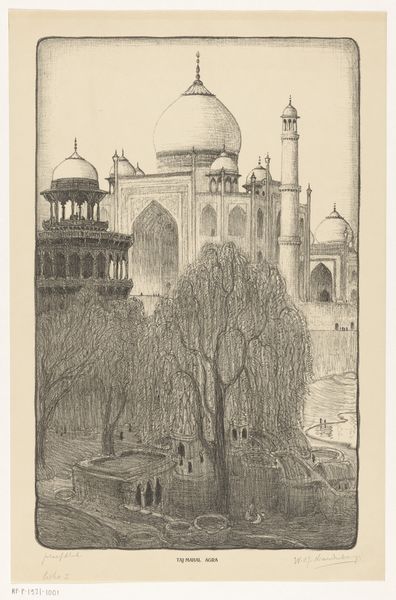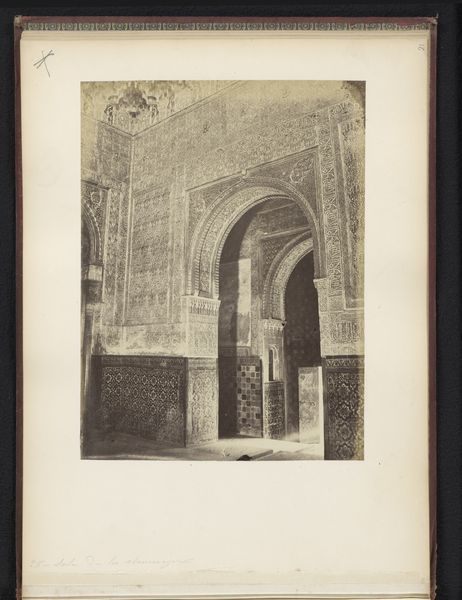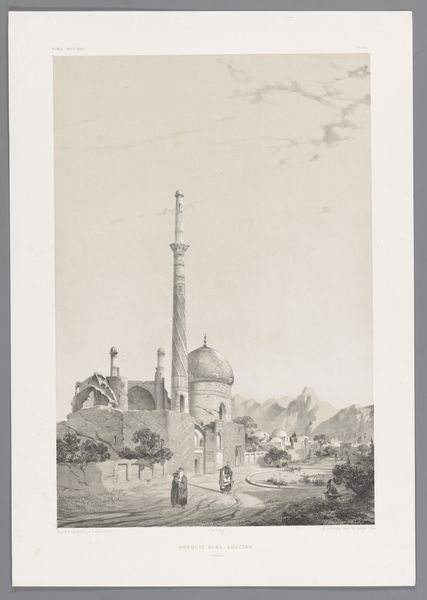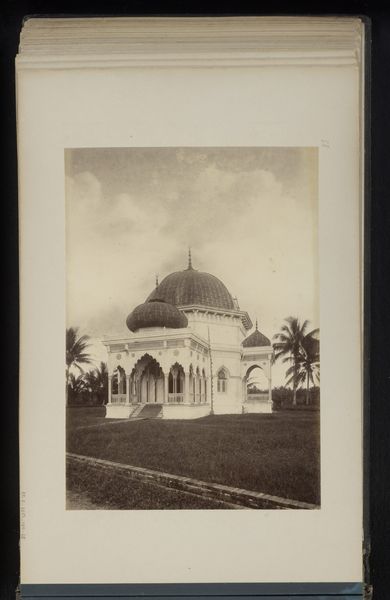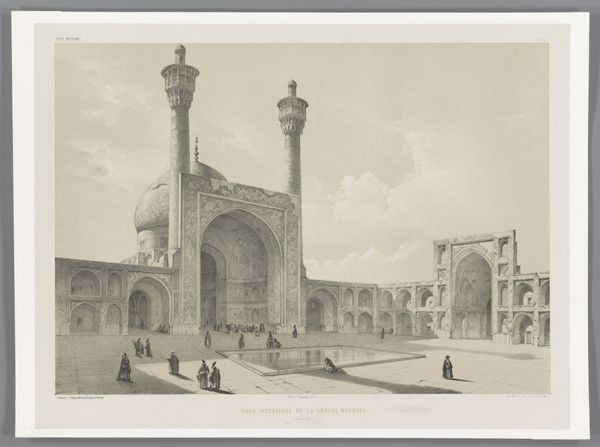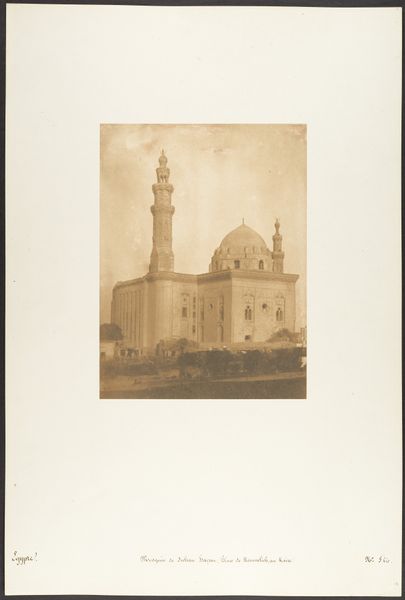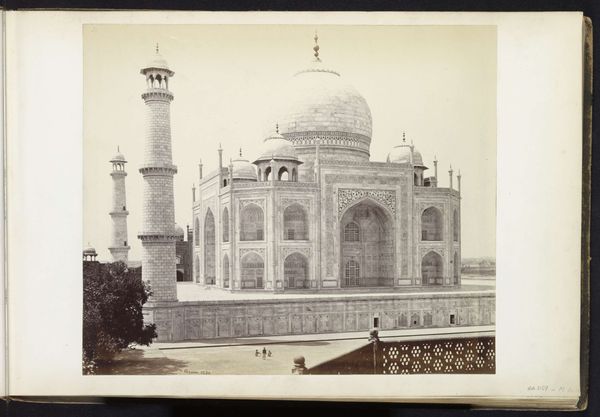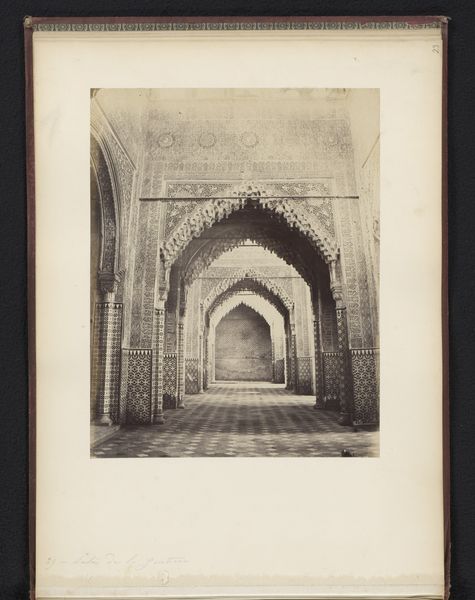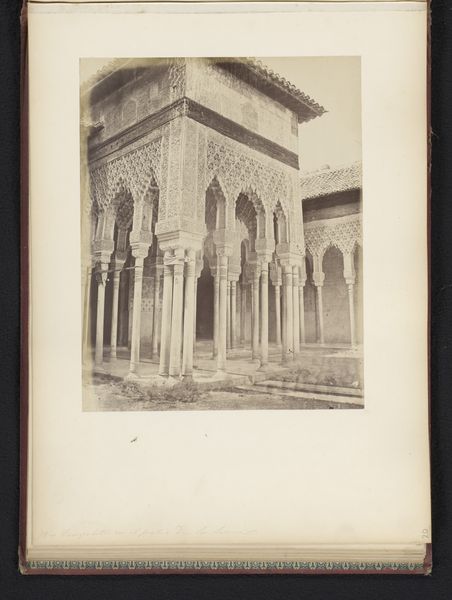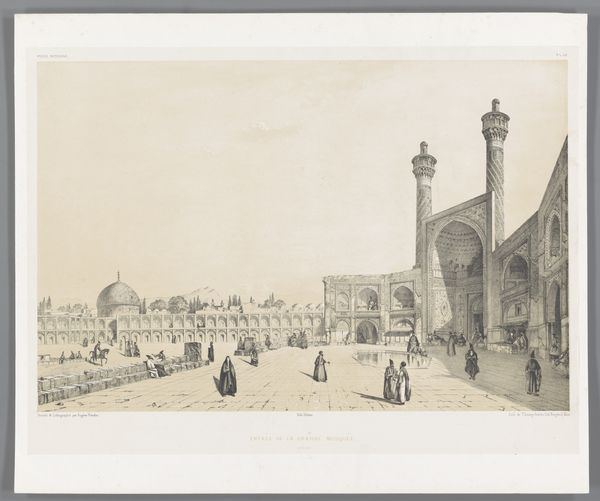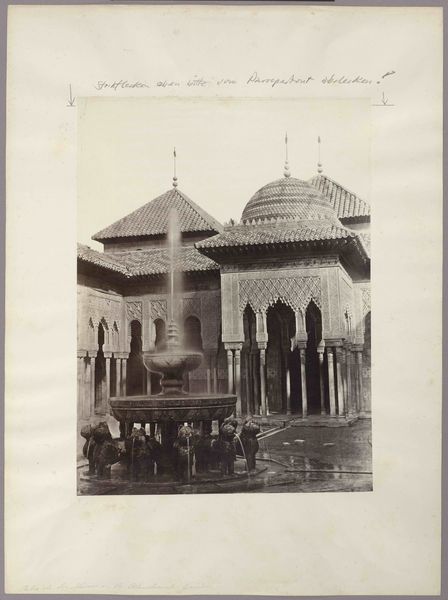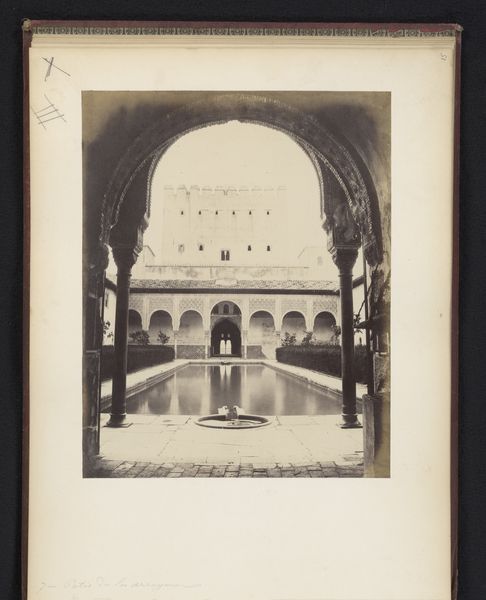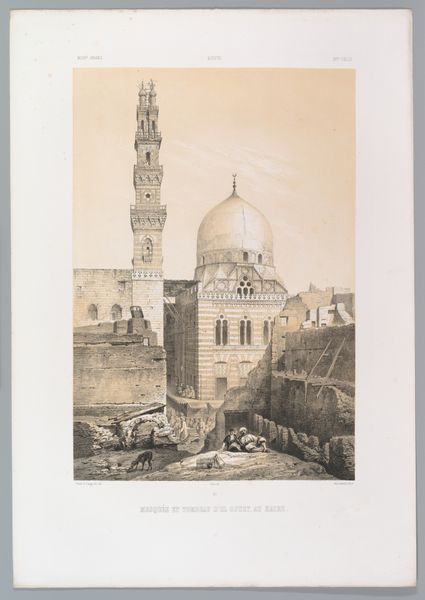
drawing, ink, engraving, architecture
#
drawing
#
landscape
#
ink
#
islamic-art
#
watercolour illustration
#
engraving
#
architecture
Dimensions: height 550 mm, width 446 mm
Copyright: Rijks Museum: Open Domain
Curator: Here we have Eugène Flandin's "Chahar Bagh School in Isfahan," dating from 1843 to 1854, a beautiful example of architectural rendering held here at the Rijksmuseum. Editor: My initial impression is one of serene monumentality; the building emanates strength, softened by the surrounding trees, almost as though it’s slowly being absorbed by the landscape itself. Curator: Flandin, as part of a French diplomatic mission to Persia, meticulously documented the country's architecture and cultural landscape. Consider how the image embodies the complex political and cultural exchange between Europe and Persia during the 19th century. His representations shaped Western perceptions of Persia, and reflect the power dynamics inherent in that gaze. Editor: Agreed, though his method is noteworthy as well; look at the engraving technique itself, it’s extraordinarily precise. Notice the sharp, clear lines and calculated gradations. How he coaxes such depth and shadow from a primarily linear medium. Curator: That level of detail, however, also underscores the colonial project of documentation. Flandin's illustrations were scientific in their ambition, attempting to categorize and "capture" a culture, inevitably objectifying its people and their lived spaces. The act of illustrating, itself, reinforces that sense of cultural ownership. Editor: I can concede the gaze, but do you also see how he deftly balances symmetry and asymmetry? The minarets frame the dome, providing structure, but the trees disrupt what might otherwise be static. There’s movement, an elegant spatial dialogue happening here. Curator: Absolutely. Flandin presents this sacred space—and indeed the people inhabiting it—within a carefully constructed framework, almost stage-like, reinforcing Orientalist tropes and expectations. These kinds of drawings, widely circulated, solidified pre-existing notions. Editor: I am drawn to the architectural interplay itself, how the engraver manages to render stone and foliage with equal facility, a beautiful marriage of the geometric and organic that Flandin recognized, and obviously hoped to translate. Curator: By situating this piece within its historical context, we can reflect critically on the enduring influence of such images on contemporary understandings of Iranian history and culture. The image, and its Western creation, serves as an invitation to understand those biases. Editor: I am now compelled to view its geometrical organization with the intention of cultural power at play. Thanks.
Comments
No comments
Be the first to comment and join the conversation on the ultimate creative platform.
